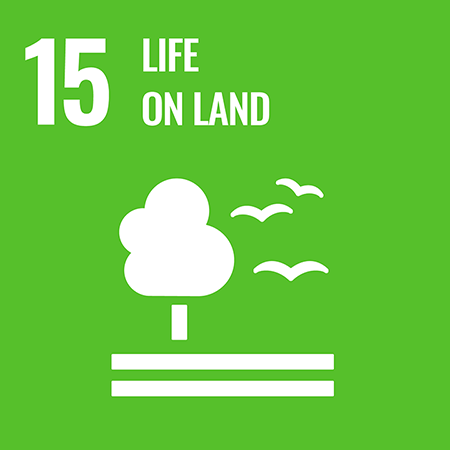Securing the Sustainability Forest Soil Functions via Optimized Harvesting Technologies
Abstract
The mechanisation of forest managementis of great importance for the sustainable provision of the renewable raw material wood. The coordination of the technology with the ecological framework conditions is decisive for the care of the utilisation. The particularly productive, often ‘heavy’ soils of the flysch and molasse zone are susceptible to compaction and therefore pose a challenge for mechanisation. Soil compaction by driving changes the soil structure and thus the infiltration capacity, the plant-available water storage capacity, the water balance of the ecosystem and the soil air balance. Site properties such as rootability, tree species suitability, productivity, but also other soil functions such as the source and sink effect of the soil for greenhouse gases or the habitatfunction for soil organisms are closely related to the soil structure. A site-adapted use of technology is therefore a basis for forest management on soils susceptible to compaction. The aim of this projectis to create a database for the assessment of the effects of different wood harvesting technologies on forest sites with compaction-prone soils for the currently prevailing and expected future climatic conditions. On the basis of documented timber harvesting operations of the lastten years and the utilisations carried out under controlled conditions during the project period, the effects of differenttechnologies used (type, design) under defined soil conditions (water content, soil frozen or not, etc.) are examined. The indicators allow a statement on the impact of different harvesting measures on soil functions, the remaining stand as well as regeneration. Water availability, controlled by the ratio of surface runoff to infiltration, water storage capacity and root penetration of the soil, is of particular importance for the following stand. This comparison is intended to provide forest managers with a practical decision matrix that clarifies the opportunities and risks of the various technologies in additi‐ on to the expected harvesting costs. The aim is to derive recommendations for the choice of the most suitable harvesting technology depending on location and weather conditions. Demonstration plots will be established for education and further raining.
keywords water budget soil gas exchange soil compaction biodiversity ecophysiology
Publikationen
Waldbewirtschaftung im Klimawandel — Sicherung der Bodenfunktionen von Waldökosystemen durch standortsgerechte Holzernte
Autoren: Katzensteiner, K; Kitzler, B; Kühmaier, M; Markart, G; Nemestothy, N; Rewald, B; Scheidl, C; Behringer, M; Bieringer, M; Froemel, M; Gasser, L; Grünberg, J; Haas, C; Hofbauer, A; Huber, C; Meißl, G; Schatz, R Jahr: 2023
Forschungsbericht (extern. Auftraggeber)
Project staff
Klaus Katzensteiner
Ao.Univ.Prof. Dipl.-Ing. Dr.nat.techn. Klaus Katzensteiner
klaus.katzensteiner@boku.ac.at
Tel: +43 1 47654-91213
Project Leader
01.03.2022 - 30.09.2025
Martin Kühmaier
Priv.-Doz. Dipl.-Ing. Dr.nat.techn. Martin Kühmaier
martin.kuehmaier@boku.ac.at
Tel: +43 1 47654-91518
Sub Projectleader
01.03.2022 - 30.09.2025
Boris Rewald
Assoc. Prof. Dipl.-Biol. Dr.rer.nat. Boris Rewald
boris.rewald@boku.ac.at
Sub Projectleader
01.03.2022 - 30.09.2025
Christian Scheidl
Priv.-Doz. Dipl.-Ing. Dr.nat.techn. Christian Scheidl
christian.scheidl@boku.ac.at
Tel: +43 1 47654-87116
Sub Projectleader
01.03.2022 - 30.09.2025
Maximilian Behringer
Dipl.-Ing. Maximilian Behringer
maximilian.behringer@boku.ac.at
Project Staff
01.03.2022 - 30.09.2025
Lisa Theresa Gasser
Dipl.-Ing. Lisa Theresa Gasser
lisa.gasser@boku.ac.at
Project Staff
01.03.2022 - 30.09.2025
Corinna Poß
Corinna Poß B.Sc.
corinna.poss@students.boku.ac.at
Project Staff
01.03.2022 - 30.09.2025
BOKU partners
External partners

Federal Forest Office (BFW)
Barbara Kitzler
partner
